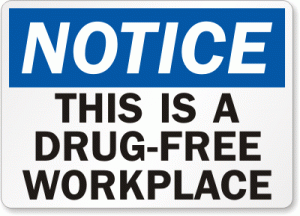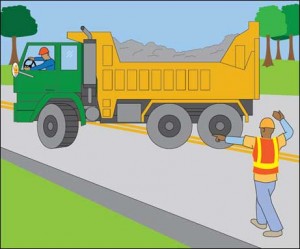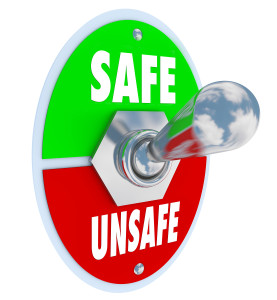 I will never forget where I was and how I felt that day. Today we pause to honor those that died and our brave men and women that risk their lives for our freedom every day.
I will never forget where I was and how I felt that day. Today we pause to honor those that died and our brave men and women that risk their lives for our freedom every day.
We will never forget!
Risk Profile Improvement
 In a drug-free workplace, the employer has taken steps and initiated policies to ensure that employees, vendors, and customers are not:
In a drug-free workplace, the employer has taken steps and initiated policies to ensure that employees, vendors, and customers are not:
Additionally, the goal of a drug-free workplace program, as they have traditionally been developed, is to encourage an employee with a substance abuse problem to seek treatment, recover, and return to work.
via Develop a Drug-free Workplace – Drug Testing in the Workplace.
 When you drive defensively, you’re aware and ready for whatever happens. You are cautious, yet ready to take action and not put your fate in the hands of other drivers. According to the U.S. Department of Transportation, 90% of all crashes are attributed to driver error.
When you drive defensively, you’re aware and ready for whatever happens. You are cautious, yet ready to take action and not put your fate in the hands of other drivers. According to the U.S. Department of Transportation, 90% of all crashes are attributed to driver error.
Following these defensive driving tips can help reduce your risk behind the wheel:
 A backover incident occurs when a backing vehicle strikes a worker who is standing, walking, or kneeling behind the vehicle. These incidents can be prevented. According to the Bureau of Labor Statistics, over 70 workers died from backover incidents in 2011. These kinds of incidents can occur in different ways. Click on the link to learn more.
A backover incident occurs when a backing vehicle strikes a worker who is standing, walking, or kneeling behind the vehicle. These incidents can be prevented. According to the Bureau of Labor Statistics, over 70 workers died from backover incidents in 2011. These kinds of incidents can occur in different ways. Click on the link to learn more.
 What are the hazards associated with operating powered industrial trucks?
What are the hazards associated with operating powered industrial trucks?
There are many types of powered industrial trucks. Each type presents different operating hazards. For example, a sit-down, counterbalanced high-lift rider truck is more likely than a motorized hand truck to be involved in a falling load accident because the sit-down rider truck can lift a load much higher than a hand truck. Workplace type and conditions are also factors in hazards commonly associated with powered industrial trucks. For example, retail establishments often face greater challenges than other worksites in maintaining pedestrian safety. Beyond that, many workers can also be injured when (1) lift trucks are inadvertently driven off loading docks; (2) lifts fall between docks and an unsecured trailer; (3) they are struck by a lift truck; or (4) they fall while on elevated pallets and tines.
 With the start of the new school year motorists should also re-familiarize themselves with the yellow school buses and changes in traffic flow and speed they bring. Drivers should be on the watch for school buses and know school bus safety rules. Parents of young drivers, especially those driving themselves to school for perhaps the first time this school year, should review the rules and warnings with family members. Those big yellow buses transport our most precious commodity–our children–and bus drivers report that motorists need reminders about do’s and don’t’s around school buses every fall. After all, motorists will be sharing the road with school buses during the hectic morning commute.
With the start of the new school year motorists should also re-familiarize themselves with the yellow school buses and changes in traffic flow and speed they bring. Drivers should be on the watch for school buses and know school bus safety rules. Parents of young drivers, especially those driving themselves to school for perhaps the first time this school year, should review the rules and warnings with family members. Those big yellow buses transport our most precious commodity–our children–and bus drivers report that motorists need reminders about do’s and don’t’s around school buses every fall. After all, motorists will be sharing the road with school buses during the hectic morning commute.
 Labor Day, the first Monday in September, is a creation of the labor movement and is dedicated to the social and economic achievements of American workers. It constitutes a yearly national tribute to the contributions workers have made to the strength, prosperity, and well-being of our country.
Labor Day, the first Monday in September, is a creation of the labor movement and is dedicated to the social and economic achievements of American workers. It constitutes a yearly national tribute to the contributions workers have made to the strength, prosperity, and well-being of our country.
via U.S. Department of Labor – Labor Day 2013 – The History of Labor Day.
 How do you sell a behavioral safety program to management? Keep these few pointers in mind.
How do you sell a behavioral safety program to management? Keep these few pointers in mind.
 Youth violence is a serious problem that can have lasting harmful effects on victims and their family, friends, and communities. The goal for youth violence prevention is simple—to stop youth violence from happening in the first place. But the solutions are as complex as the problem.
Youth violence is a serious problem that can have lasting harmful effects on victims and their family, friends, and communities. The goal for youth violence prevention is simple—to stop youth violence from happening in the first place. But the solutions are as complex as the problem.
Prevention efforts should aim to reduce factors that place youth at risk for perpetrating violence, and promote factors that protect youth at risk for violence. In addition, prevention should address all types of influences on youth violence: individual, relationship, community, and society. Effective prevention strategies are necessary to promote awareness about youth violence and to foster the commitment to social change.
via CDC – Prevention Strategies – Youth Violence – Violence Prevention – Injury.